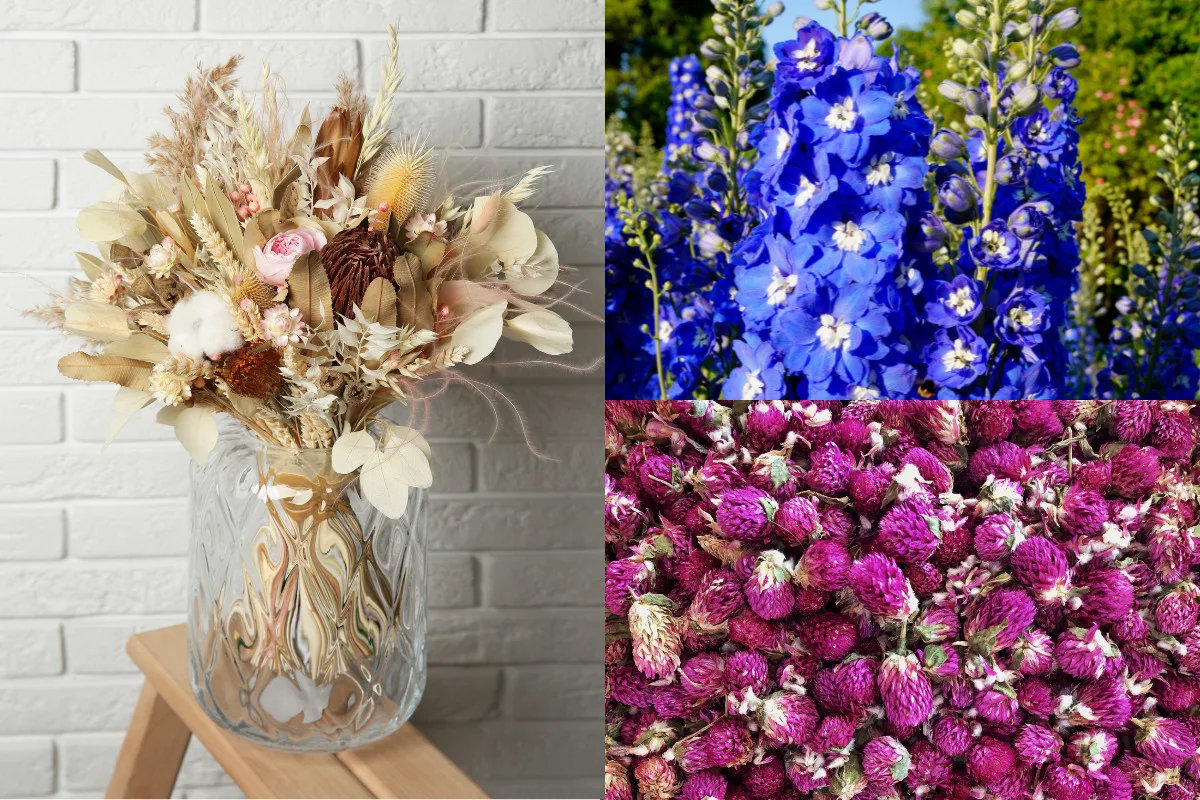
Many gardeners who prefer growing flowers choose specific varieties for fresh-cut arrangements. After all, who doesn’t enjoy the look of a fresh bouquet in their home? The bright colors, vivid greenery and intoxicating scent, are a way of enjoying your hard work indoors and out.
But what about growing flowers specifically to use in dried floral arrangements?
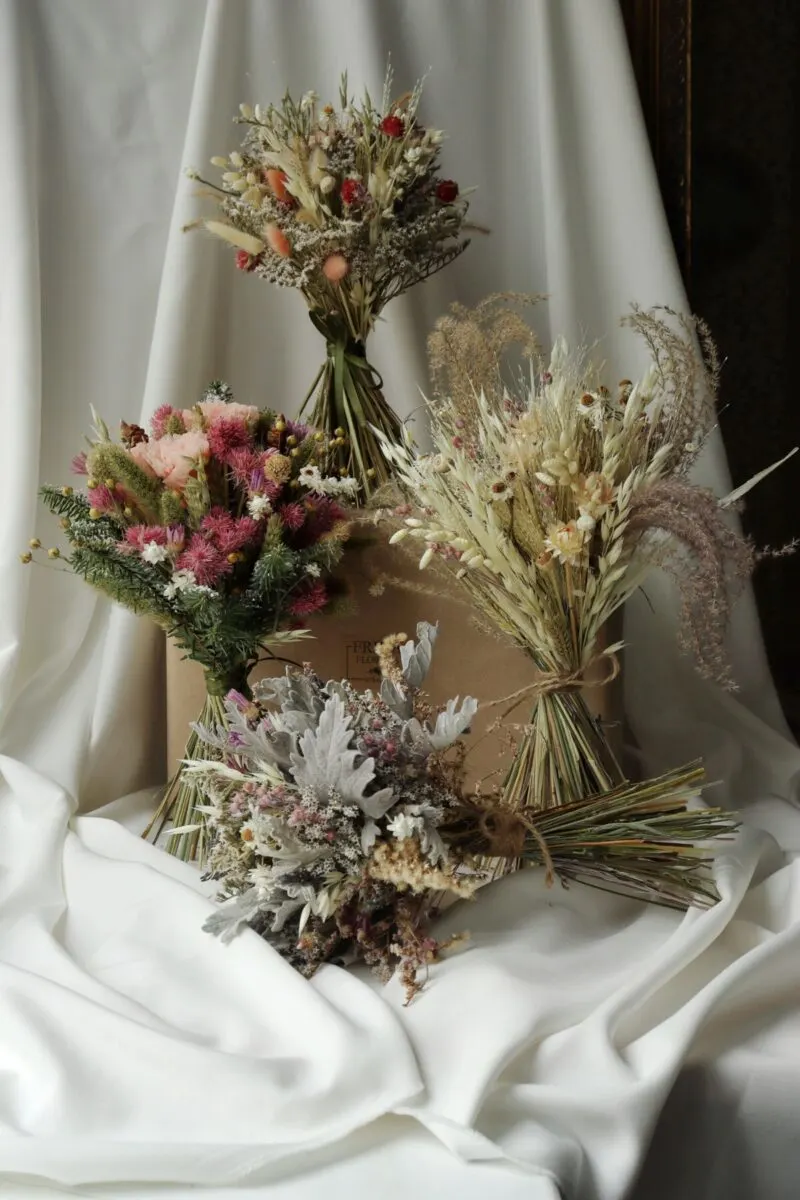
With numerous simple drying methods available, you can just as easily enjoy flowers in your home all year long.
With the increasing popularity of cottage-core and the resurgence of all things 90s, dried floral displays are making a big comeback. Dried flowers are even a popular choice for brides these days. And why not? These delicate pieces are much easier on the allergy sufferer. They last quite a bit longer than their fresh counterparts. And drying flowers highlights a very different side of their beauty, complementing many different home decors from bohemian to minimalist.
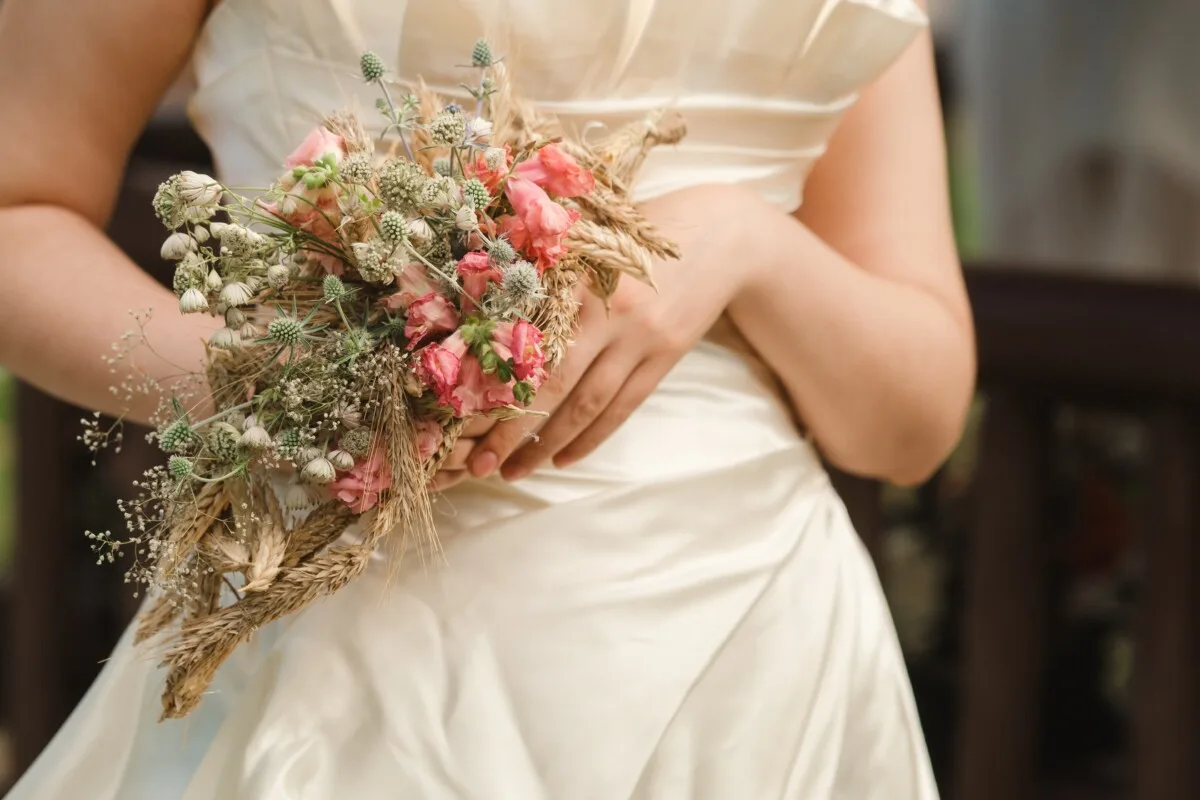
Choosing the Right Plants
But not all flowers make good candidates for drying. It all depends on what you plan on using them for. While some plants, like pansies, hold their color beautifully when pressed, they’re much too delicate to be used in a dried bouquet.
For arrangements, choose plants with sturdy stems that don’t bruise easily when handled while fresh.
You’ll want to harvest flowers for drying at the peak of their bloom. Be sure and choose flowers free from blemishes, as these are more likely to rot during the drying process, and sometimes lesions can affect the dried color of leaves and petals.
Obviously, all dried plants will fall apart if handled too roughly, but the best options can stand up to the light handling required to create a floral display. Nearly all of these options can be air-dried, but if you want brighter colors or a longer-lasting piece, you might want to consider using silica gel, glycerin or another method.
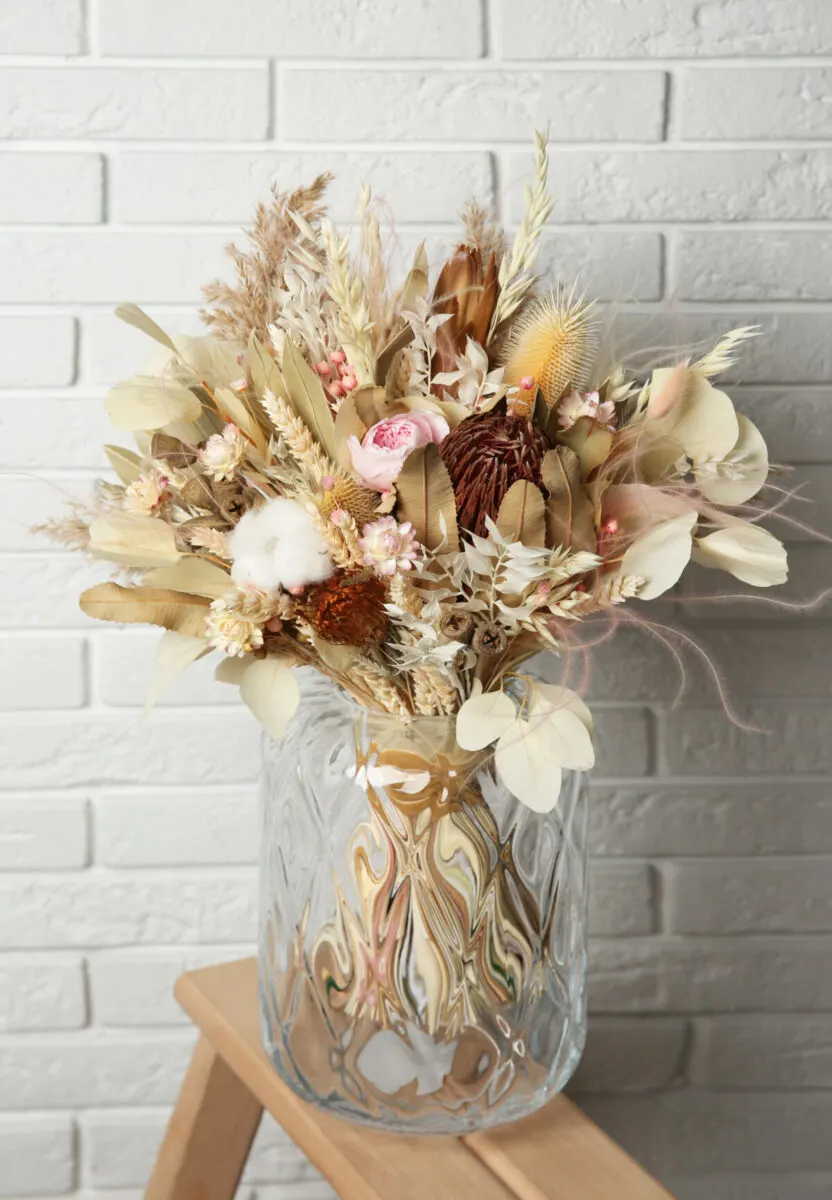
Dried floral arrangements are a testament to the fragile beauty of nature.
Go For More than Blooms
A good floral arrangement has more than just flowers going on. Don’t forget to choose other plants that will offer filler or structural interest – like leaves, seed pods or grasses.
The best part about nearly all of these plants is that they also make lovely additions to a fresh-cut arrangement, so you may already be growing a few of these in your garden.
1. Ageratum
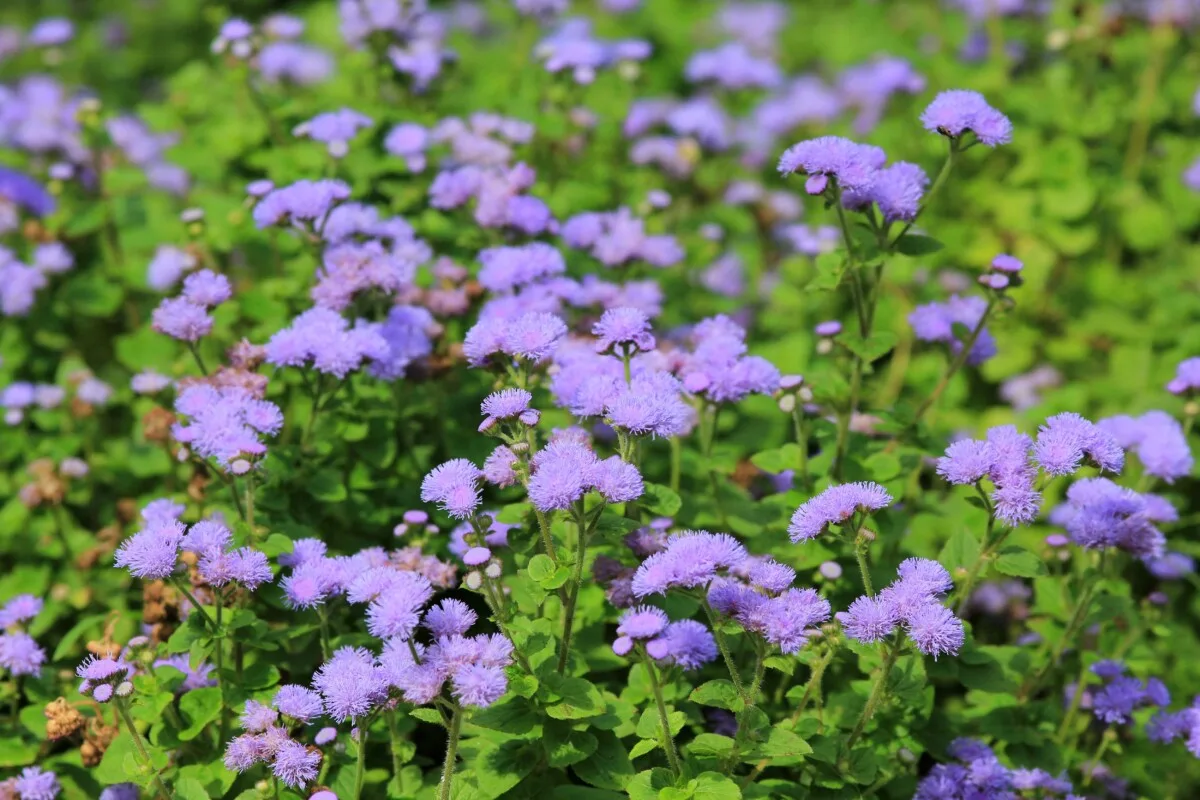
Ageratum is already a popular annual because of its gorgeous purple-blue blooms. They make a long-lasting cut flower in fresh arrangements and hold their color when dried. Along with their usual blue, they come in yellow, white and pink. They are easy to air dry.
Light: Full sun to light shade.
Soil: Well-draining soil.
Watering: Regular water, keeping the soil evenly moist.
Care: Pinch back to encourage bushier growth and deadhead spent flowers.
2. Eucalyptus
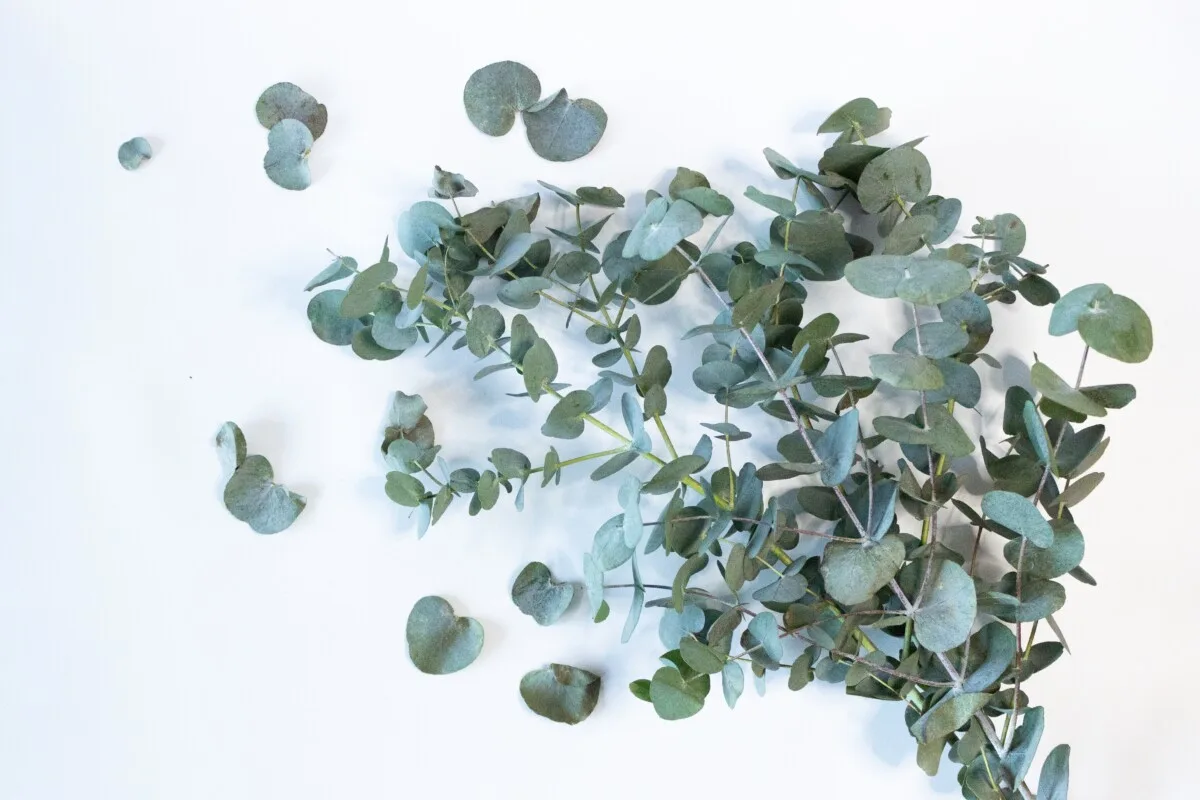
Eucalyptus is such a fantastic option for floral arrangements because not only does it dry beautifully, but it smells wonderful. While many plants lose their scent when dried, eucalyptus retains that distinct fresh smell. And the coin-shaped leaves and gray-green color add textural interest to wreaths, swags and bouquets. Depending on your growing zone, you may need to grow eucalyptus in a container and bring it indoors during the winter. This plant air dries quite well.
Light: Full sun.
Soil: Well-draining soil.
Watering: Regular watering, allowing the soil to dry slightly between waterings.
Care: Prune to control size and encourage branching.
3. Decorative Grasses
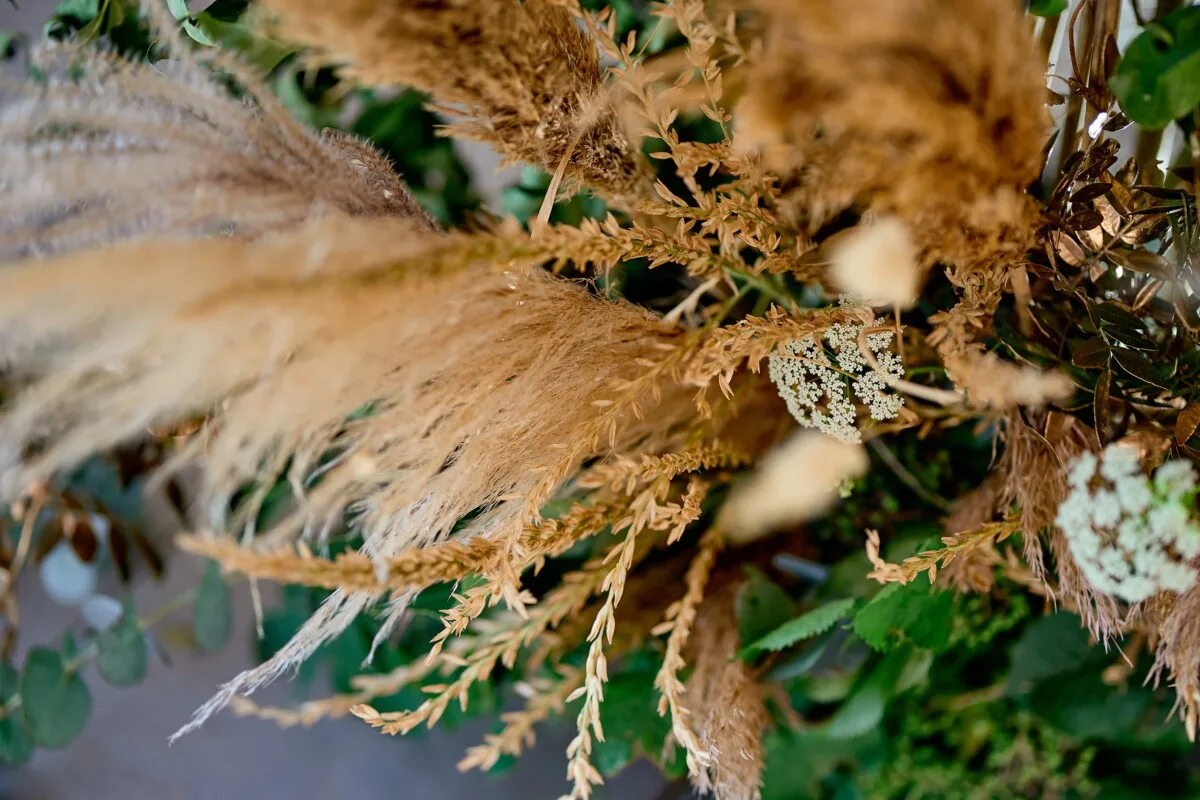
Tall, sweeping decorative grasses are a great feature in a taller dried piece. And there are so many gorgeous species to choose from. If you’re considering growing decorative grass, proceed with caution. While pampas grass is often a popular choice, some areas consider this species invasive. If you’re going to grow decorative grasses for display, be sure to choose a non-invasive species. Air drying is the way to go with decorative grasses.
Light: Full sun.
Soil: Well-draining soil.
Watering: Established plants are usually drought-tolerant but benefit from occasional watering.
Care: Trim back in late winter to early spring to encourage new growth.
4. Broom Corn (Sorghum bicolor)
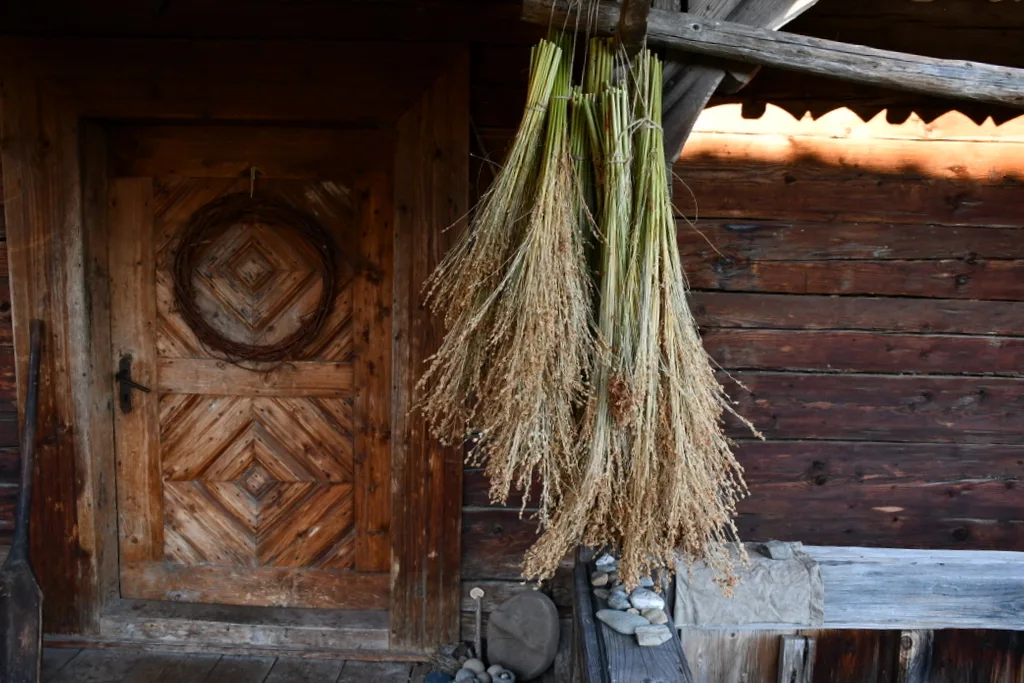
Broom corn, also known as great millet, is a great choice for rustic floral displays. Its sweeping stalks give a sense of motion and make for a statement piece. It air dries quite well and is relatively easy to grow. Cheryl will walk you through everything you need to know to grow and harvest broom corn. Hang to dry.
Light: Full sun.
Soil: Well-draining soil.
Watering: Regular water until established, then it becomes more drought-tolerant.
Care: Harvest the colorful tassels when they’re mature.
5. Larkspur (Delphinium)
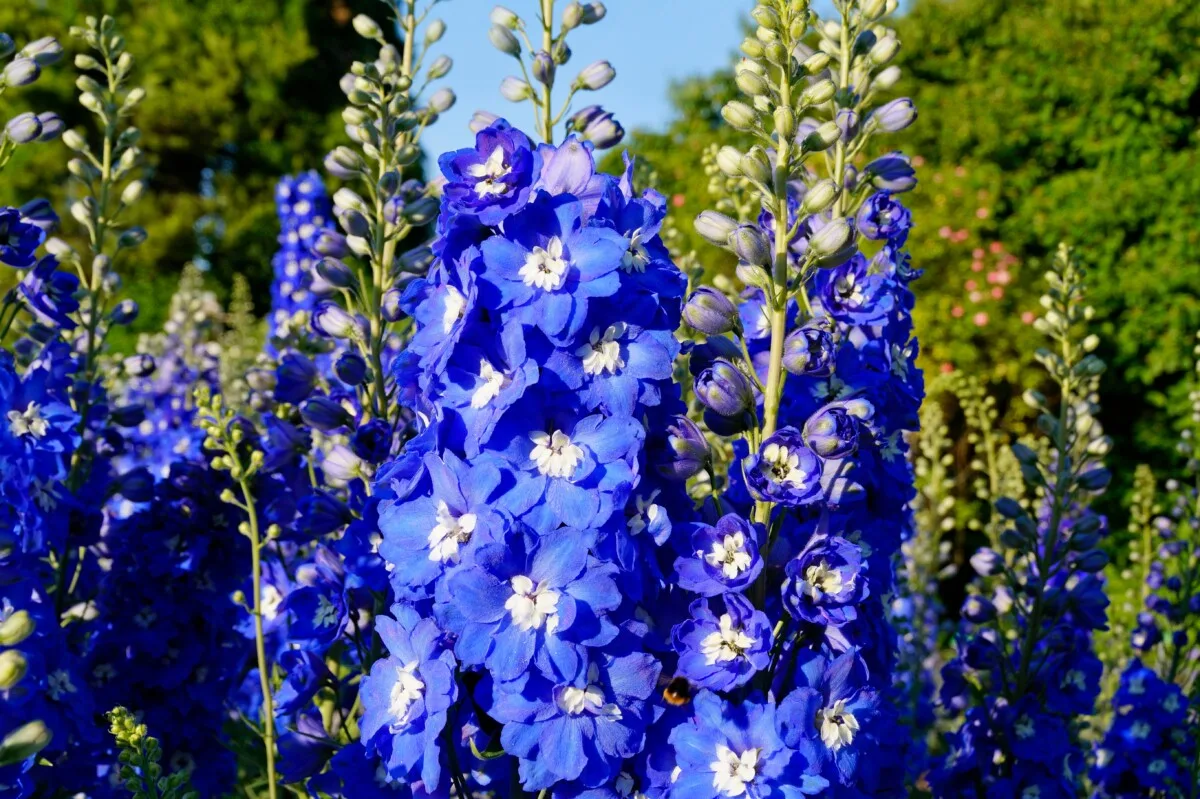
Their tall stalks of deep blue flowers make larkspur a beautiful addition to large floral arrangements and bouquets. And they look just as stunning in dried pieces. You can air dry them by hanging them, but to preserve the color better, you may wish to use silica gel.
Light: Full sun to light shade.
Soil: Well-draining soil.
Watering: Regular water, allowing the soil to dry between waterings.
Care: Deadhead spent flowers to prolong blooming.
6. Poppy (Papaver somniferum)
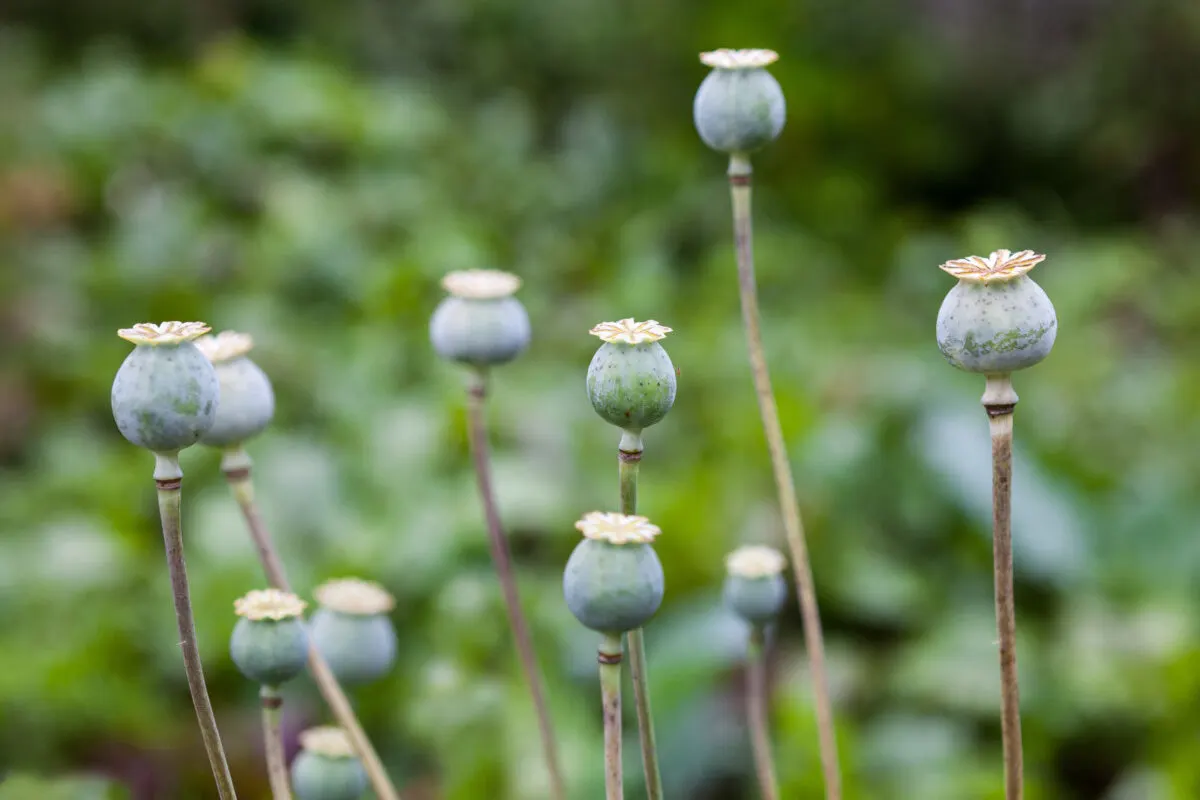
Poppies should be included in your dried flower garden because not only are the cut flowers gorgeous fresh, but their dried seed pods make interesting additions to dried floral arrangements. While you may not be able to dry the flowers, they are quite delicate and fade quickly; the seed pods are much easier to dry. Not only can they be used for decoration, but Cheryl tells us all about growing them to eat.
Light: Full sun.
Soil: Well-draining soil.
Watering: Regular water until established, then they can tolerate drier conditions.
Care: Allow seed pods to dry on the plant to collect seeds for future planting.
7. Bachelor Button or Cornflower
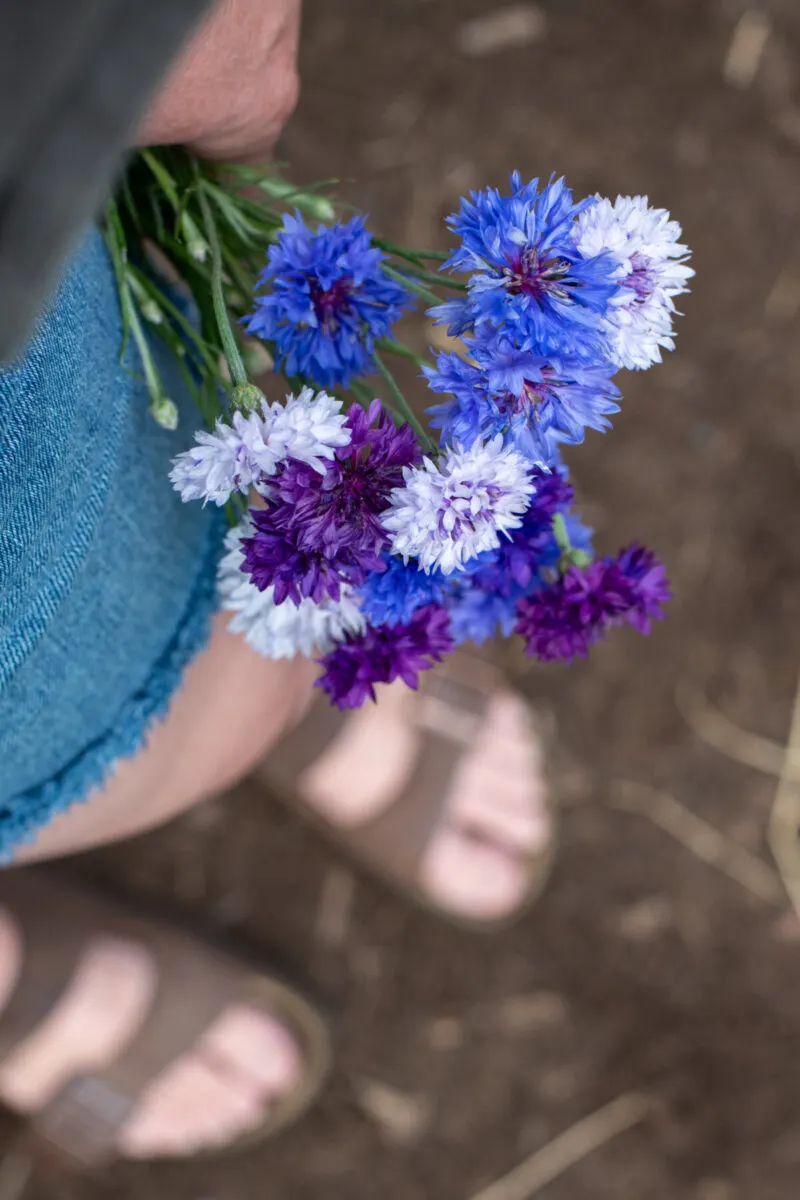
These rustic, shaggy flowers come in their traditional cornflower blue and deep purple, pink and white. They’re easy to grow, and their pale silver-green foliage looks great in dried arrangements. The abundant blooms air dry easily. Learn all the great reasons you should have bachelor button growing in your garden and how to care for it.
Light: Full sun.
Soil: Well-draining soil.
Watering: Regular water, allowing the soil to dry between waterings.
Care: Deadhead to encourage continuous blooming.
8. Everlastings (Helichrysum)
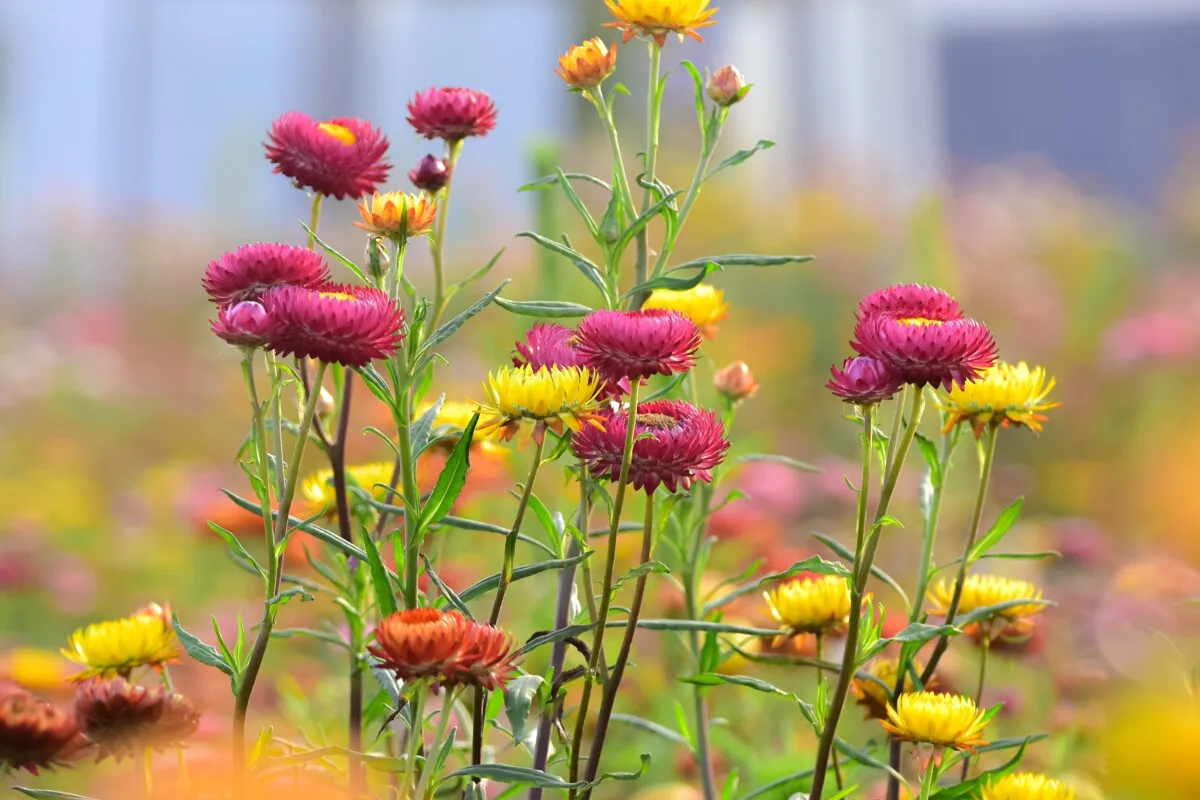
Everlastings, also known as strawflowers, are popular choices for dried flower arrangements due to their papery petals that retain their color and shape even when dried. They come in various colors, including shades of white, pink, orange, and yellow. Helichrysum blooms can be harvested at their peak and hung upside down to dry naturally, making them ideal for air drying.
Light: Full sun.
Soil: Well-draining soil.
Watering: Regular water until established, then it becomes more drought-tolerant.
Care: Pinch back to encourage bushier growth, deadhead spent flowers.
9. Statice (Limonium)
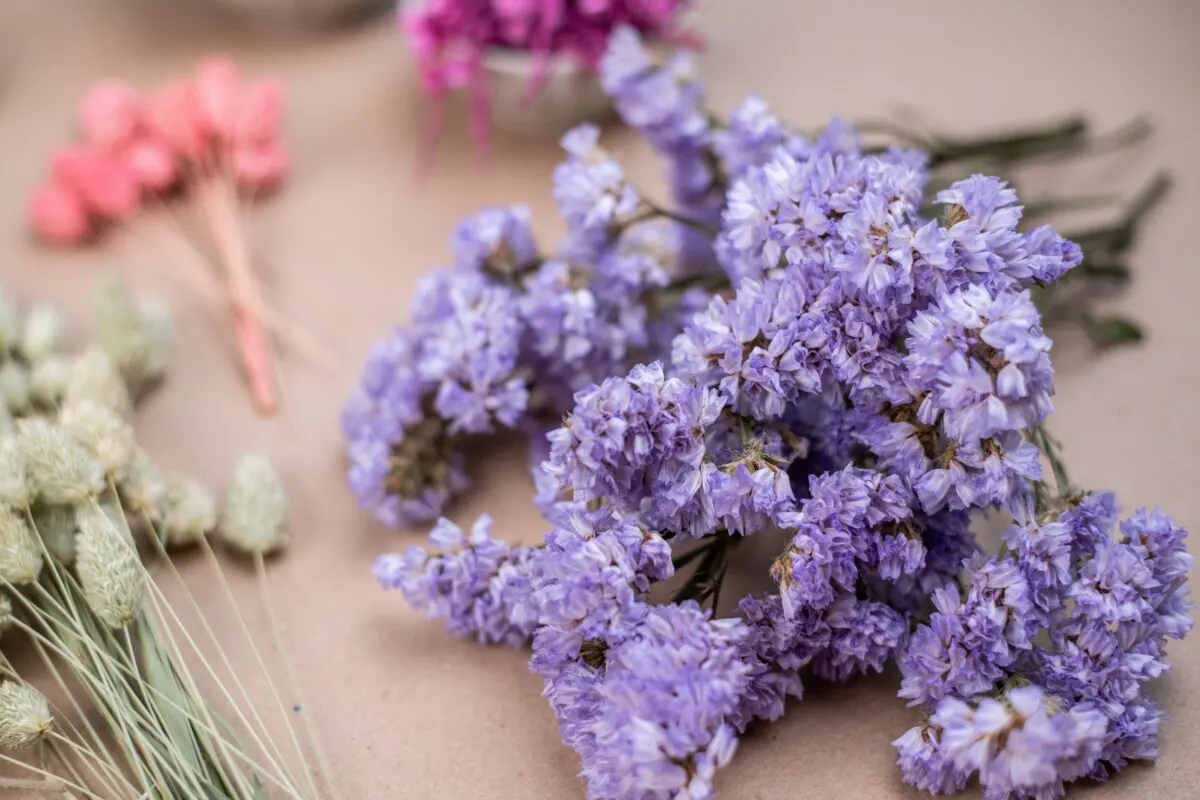
Statice flowers are renowned for retaining their vivid colors even after drying. They are the epitome of dried flowers – producing long-lasting clusters of tiny, papery flowers in vibrant shades of blue, purple, pink, and yellow. Statice is often dried using air drying methods, as they maintain their shape and color exceptionally well and don’t need special handling.
Light: Full sun.
Soil: Well-draining soil.
Watering: Regular water until established, then it becomes more drought-tolerant.
Care: Cut flowers for drying before they fully open.
10. Globe Amaranth (Gomphrena)
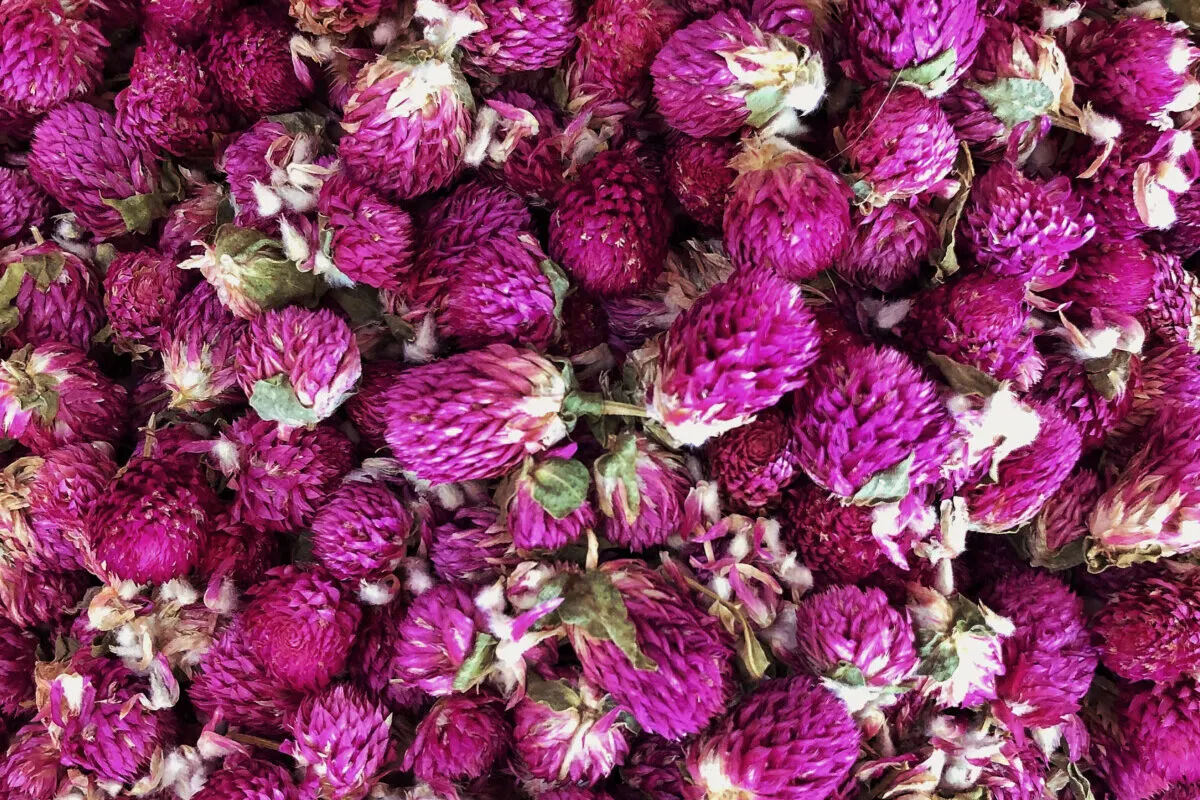
Globe amaranth flowers are too cute for words, with their round, clover-like heads that come in various shades of purple, pink, red, and white. These flowers start out looking and feeling as if they’re already dried. So, it’s no surprise they hold their shape and color remarkably well when dried. Globe amaranth can be air-dried by hanging them upside down or using silica gel.
Light: Full sun.
Soil: Well-draining soil.
Watering: Regular water until established, then it becomes more drought-tolerant.
Care: Deadhead spent flowers to encourage more blooms.
11. Lavender (Lavandula)
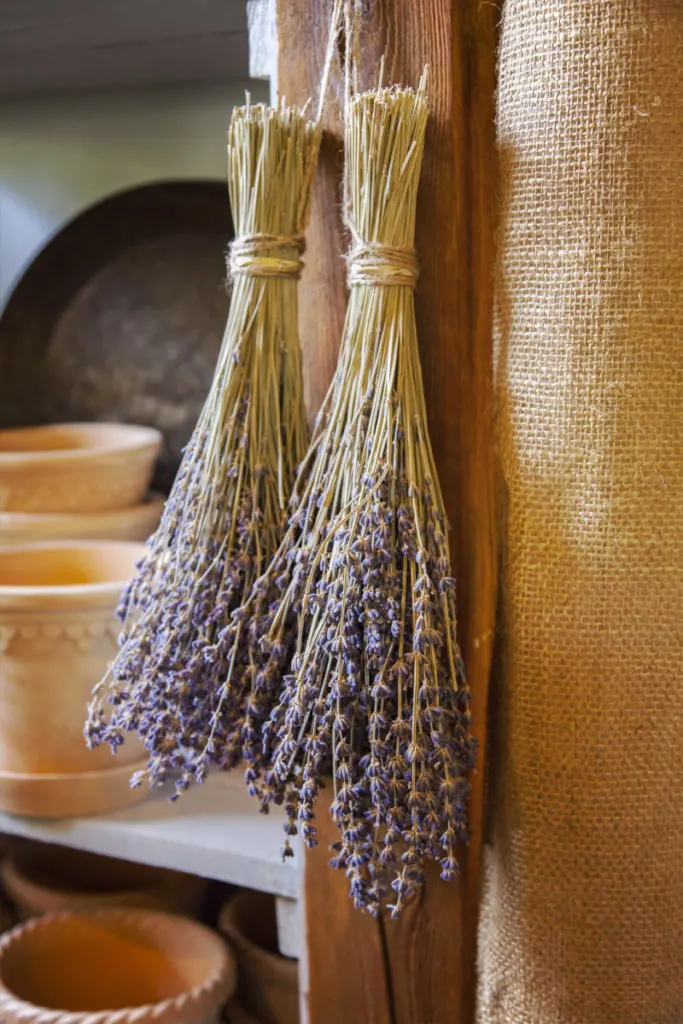
Lavender is one of the most popular dried flowers, and it’s no wonder why. It offers a delightful fragrance and retains its color and shape when dried. The vibrant purple hues and slender stems of dried lavender make it a popular choice for swags, wreaths, and potpourri. Lavender can be air-dried by hanging upside down, or the flowers can be harvested and dried in bunches.
Light: Full sun.
Soil: Well-draining, slightly alkaline soil.
Watering: Infrequent deep watering once established, as lavender is drought-tolerant.
Care: Prune after flowering to maintain shape and encourage new growth.
12. Baby’s Breath (Gypsophila)
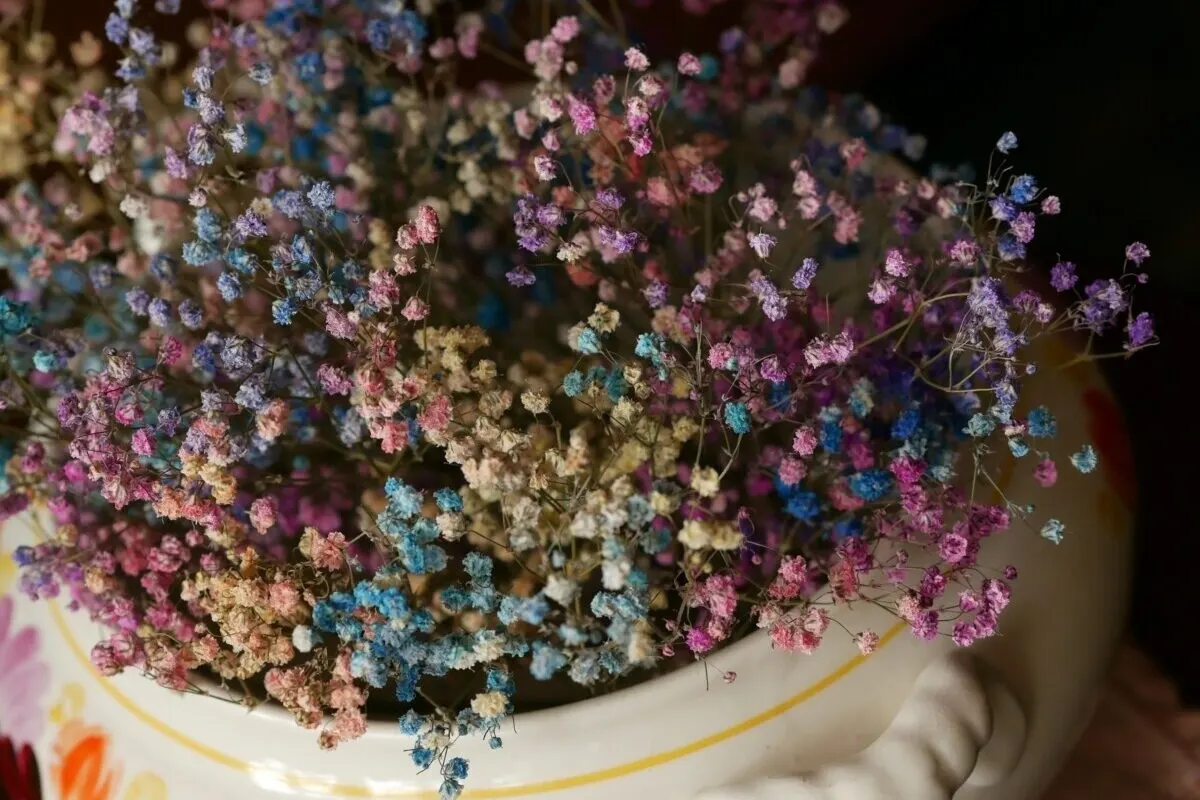
Everyone knows this popular flower from fresh flower arrangements. However, this filler flower, when dried, retains its small white or pink blooms and delicate form, adding a whimsical touch to dried flower compositions. They are easily dyed different colors as well by adding food coloring to the water and putting them in a vase for a few days. Air drying or silica gel are good methods for drying Baby’s Breath.
Light: Full sun.
Soil: Well-draining soil.
Watering: Regular water until established, then it becomes more drought-tolerant.
Care: Prune after flowering to encourage more blooms.
13. Roses (Rosa)
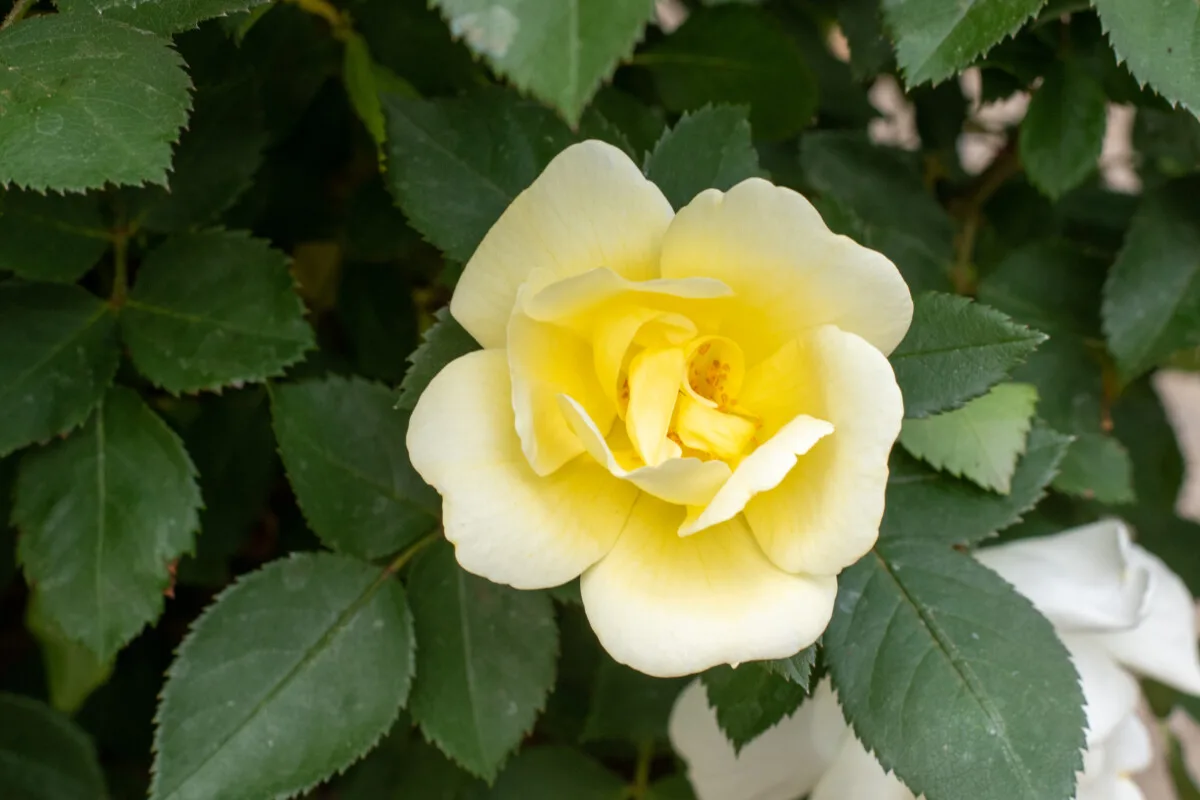
Roses are classics that preserve beautifully when dried. They maintain their shape and often develop an antique-like appearance adding a touch of romance to arrangements. Choose rose varieties with naturally sturdy petals, such as hybrid teas or floribundas, for better results. Air drying and silica gel methods can be used to dry roses.
Light: Full sun.
Soil: Well-draining, fertile soil.
Watering: Regular deep watering, especially during dry periods.
Care: Prune in spring to remove dead or diseased wood, fertilize regularly.
14. Globe Thistle (Echinops)
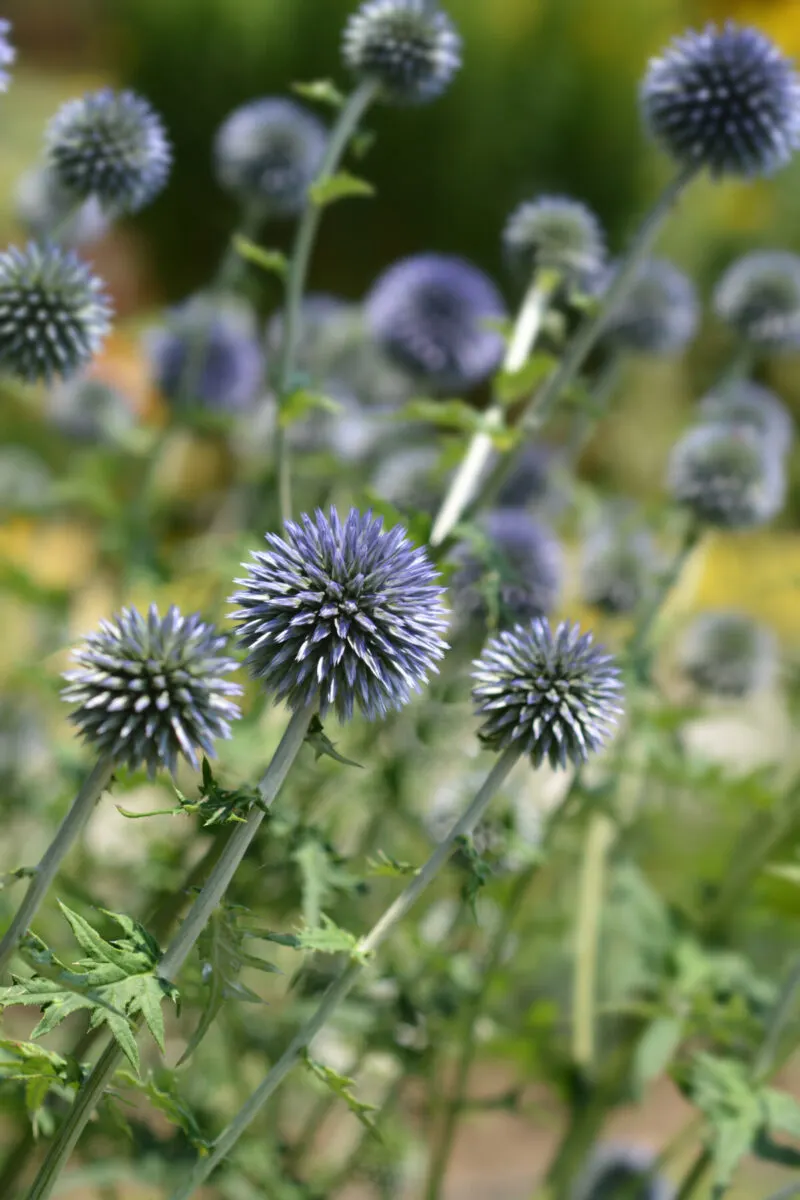
Echinops, commonly known as globe thistle, is a unique flower with spherical, spikey blooms that retain their shape and color when dried. Their striking blue or purple hues add texture and interest to dried flower arrangements. Air drying or using silica gel are effective methods for preserving the shape of globe thistle.
Light: Full sun.
Soil: Well-draining soil.
Watering: Regular water until established, then it becomes more drought-tolerant.
Care: Deadhead spent flowers to prevent self-seeding.
15. Hydrangea
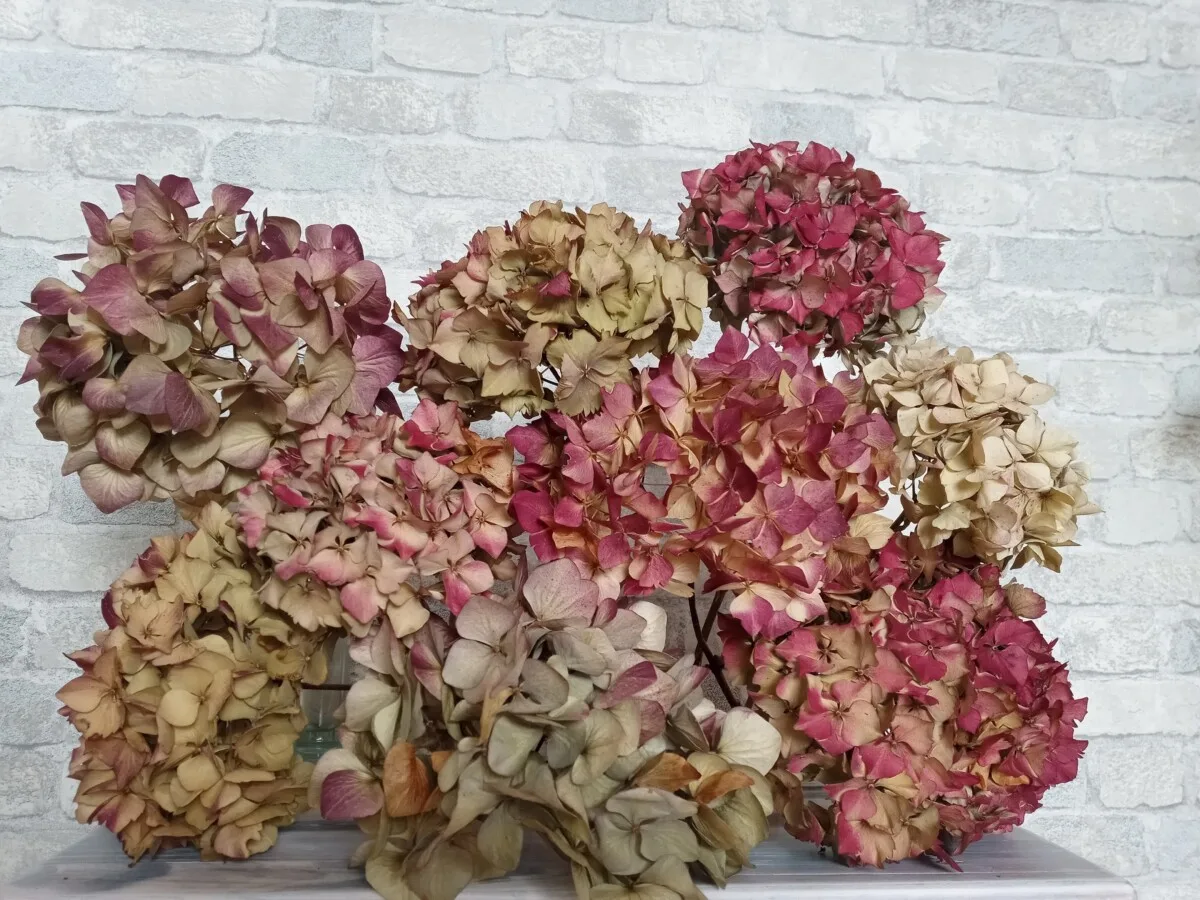
If you’re looking for another reason to add a hydrangea bush to your yard, look no further. Their massive blooms make excellent statement pieces in large dried flower bouquets. Depending on your drying method, you can even save some of that lovely color.
Light: Morning sun with afternoon shade.
Soil: Moist, well-draining soil.
Watering: Regular water to keep the soil consistently moist.
Care: Prune after flowering, adjust soil pH for desired flower color.
16. Wheat
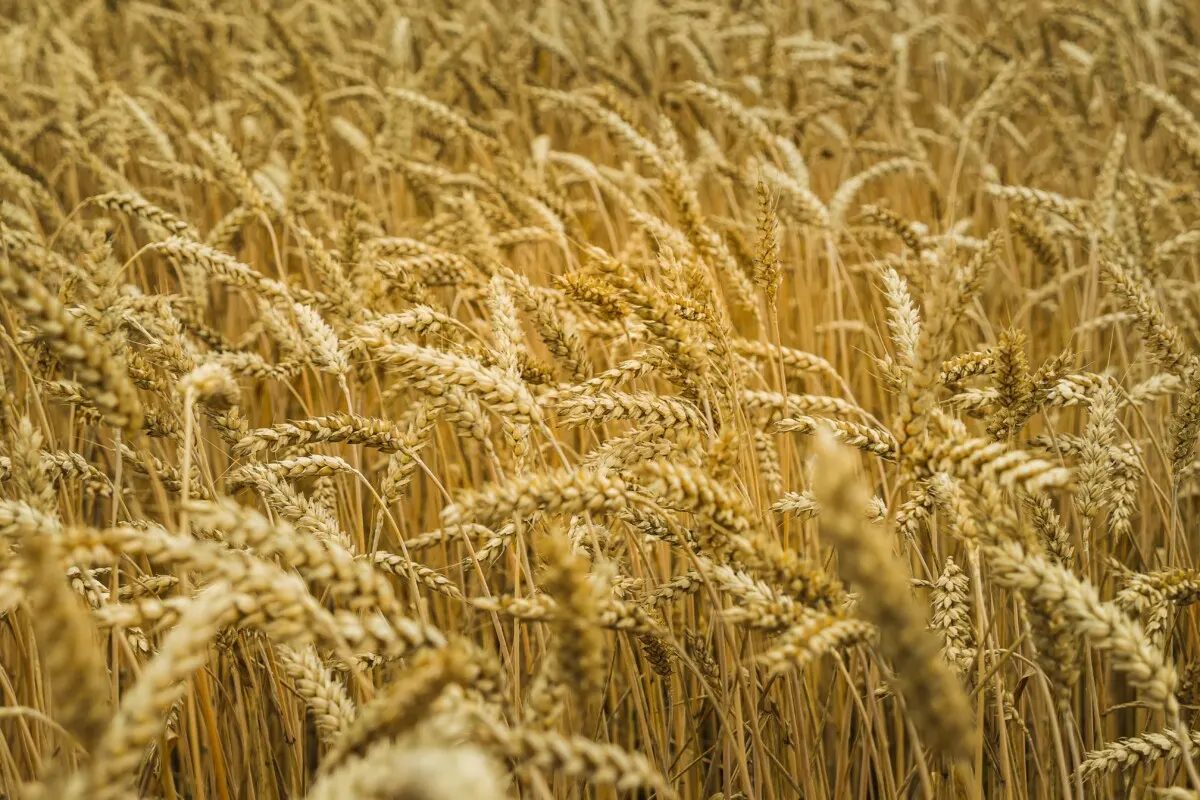
Not just for farmers. You don’t have to have huge waving wheat fields to enjoy this plant in your dried arrangements. Plant a small patch in your garden or flower beds. The creamy heads are a perfect symbol of abundance and prosperity. You can’t go wrong with wheat if you’re looking for a rustic touch in your dried arrangements.
Light: Full sun.
Soil: Well-draining soil.
Watering: Regular water until established, then it becomes more drought-tolerant.
Care: Harvest when the heads are fully developed for drying.
17. Yarrow (Achillea millefolium)
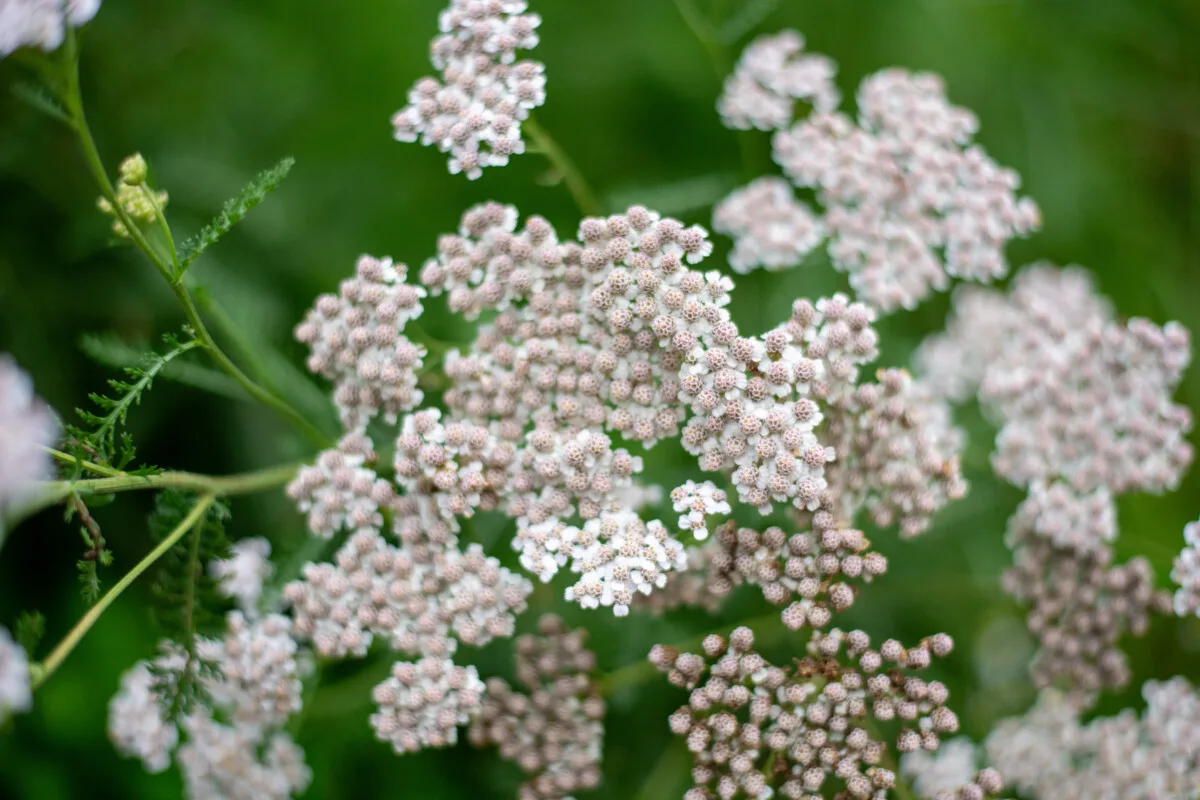
There are many reasons to grow yarrow that go beyond how beautiful the large umbels are. It’s a medicinal herb, rich with tradition. If you struggle with low pollination rates in your garden, yarrow is a pollinator magnet. Oh yeah, it dries easily into clusters of white, pink and yellow with lovely gray-green foliage. Growing yarrow is easy.
Light: Full sun.
Soil: Well-draining soil.
Watering: Regular water until established, then it becomes more drought-tolerant.
Care: Deadhead spent flowers to encourage continuous blooming.
18. Billy Balls (Craspedia)
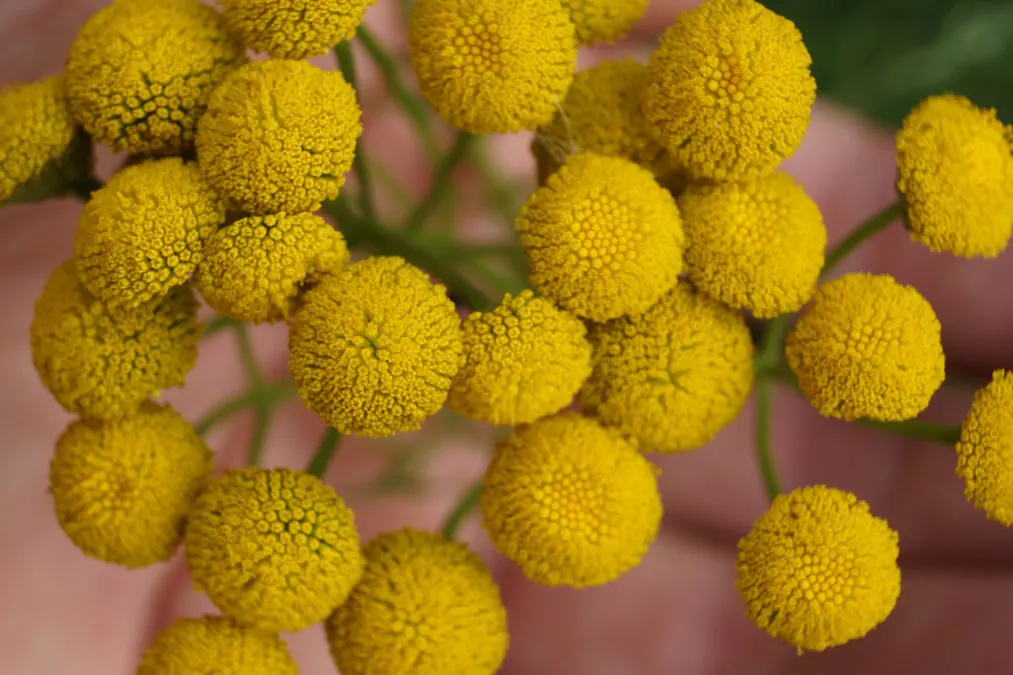
These fun flowers definitely deserve a spot in your garden. They look like little balls of sunshine, and they keep that vibrant yellow when dried too. They are quite sturdy, and their unusual shape makes for interesting texture and structure in arrangements. If you want to imbue your floral arrangements with symbolism, craspedia are considered good luck in some cultures.
Light: Full sun.
Soil: Well-draining soil.
Watering: Regular water until established, then it becomes more drought-tolerant.
Care: Harvest the round flower heads when fully developed for drying.
With a few of these flowers added to your garden, you’ll cultivate a rainbow of hues that will provide gorgeous fresh-cut flowers during the growing season and graceful dried blooms to enjoy once it’s over.

Get the famous Rural Sprout newsletter delivered to your inbox.
Including Sunday ramblings from our editor, Tracey, as well as “What’s Up Wednesday” our roundup of what’s in season and new article updates and alerts.

